Monsters of Metal: Reynolds Museum
The Reynolds Museum in Wetaskiwin Alberta is home some amazing vintage machinery and documented here it’s earth movers on a grand scale. These humongous beasts date back as much as a hundred years and came from a number of mines across the province. It’s historic diggers for the win!
Put on display for your enjoyment, come discover these Monsters of Metal. Impressive at a distance, doubly so up close, there’s coal mining shovels and draglines, road building machinery and other miscellaneous bits.
We’re about an hour south of Edmonton of the 2A Highway and this display just one “small” attraction here. There’s much to see at the Reynolds and it’s a dream come true for those into old metal. We’ve been visited the place many times and never tire of it. Hint: if offered, take in the storage warehouse tour.
Monsters of Metal: Reynolds Museum – think BIG! Look up, look waaaay up with Chris Doering & Connie Biggart (BIGDoer.com/Synd/AFP&H)
Do the same…
Towering above all it’s a large tracked mining shovel, a Bucyrus-Erie 200-B. This example dates from 1929 and just over a dozen were made from about that time up to the early 1940s. Electrically powered, a large extension cable trailed behind as it inched forward and it’s a fine example of “tech” from the era.
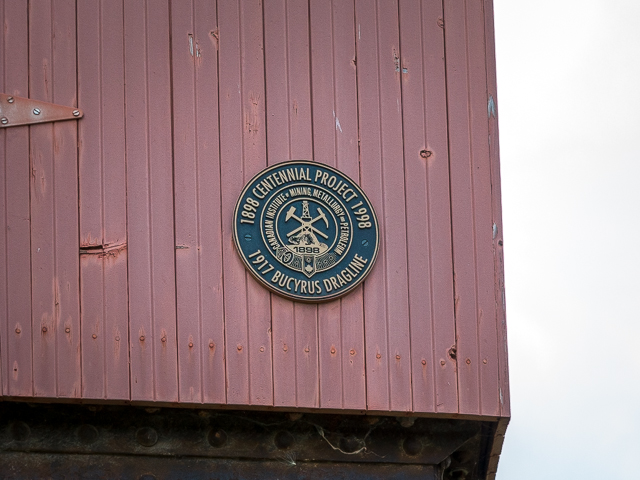
At the Reynold’s Museum Wetaskiwin Alberta.
Coming out of Montana in the early 1950s, it found work at a coal mine in Sheerness (Western Dominion Mine sometimes called the Roselyn Mine) a bit southeast of Hanna. Originally it sat atop two sets of parallel railway tracks but got converted to the crawler set up seen here after coming north. Parked in the 1970s, it sat for a couple decades before finding a forever home at the museum. Just getting it here must have been quite the production.
Some of the largest land machines ever made include a number of giant stripping shovels (those from the 1950s/1960s in particular). Coal mines are huge and so the machinery similarly gargantuan, but in spite of this the 200-B when compared to others is actually quite modest in size. Lets compare! The 200-B weighs in at some 335 tonnes and can take a five cubic metre bite with each pass. On the other hand “The Captain”, the largest such machine ever (built 1960s), came in at over 11000 tonnes and with a bucket 140 cubic metres in size. Stripping shovels remove overburden above the coal seam and as such need to have a long reach (thanks for the correction Tim).
The Sheerness Mine is still active but winding down operations soon.
A relative compact, it’s a Bucyrus-Erie 88-B loading shovel built in 1966 (approx 130 tonnes and with a few cubic metre capacity bucket). This example is diesel powered although some were electric. They could be configured as lifting cranes or draglines as well and over six hundred were made in the 1940s-1980s period. Formerly working for Manalta’s Vesta Mine near Forestburg Alberta, the present day Paintearth Mine, they parked it in the early 1980s with the Reynolds acquiring it the following decade. This shovel would load haul-trucks at the coal face and as such we’re more compact then their stripping shovel brethren.
The Paintearth Mine is in the process of closing. Coal is a four letter work (figuratively and literately) and so it’s not a good business to be in domestically.
Next it’s a dragline built by Bucyrus (pre-Erie days) in 1917, this model known as a Class 24 and the oldest machine of its type known. Steam powered, it moved about on steel rollers placed underneath the frame with a drive cable acting on the anchored bucket providing the pulling power. A small army of men would be need to move the rollers back to front as it moved, a cumbersome and labourious process indeed.
The Class 24 weighted about 130 tonnes and came with a bucket that could hold about three cubic metres of material. History moment: the biggest dragline made, Big Muskie, had a bucket that could hold 160 cubic metres. They made them big!
Class 24s were built from the early 1910s to about 1930 and early ones at the time were some of the largest land machines on the planet. Some were equipped with crawler tracks.
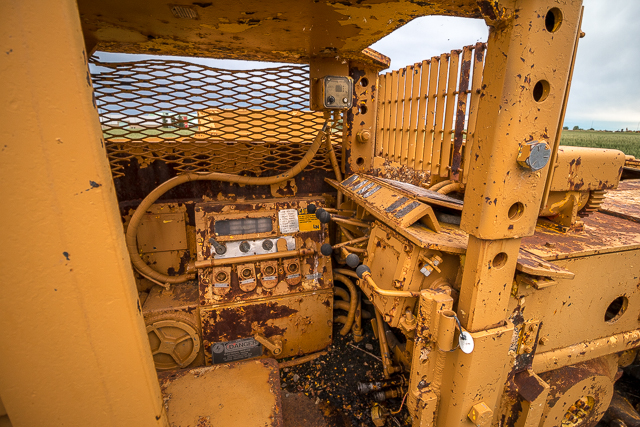
The operator’s position of a “continuous miner”.
Data suggests it originally came from Manitoba and used to dig canals. Later in the 1920s it found work at a mine in the legendary “Coal Branch” of Alberta, southwest of Hinton. When the mine closed in the 1950s it was left abandoned in a pit, which later flooded, submerging the machine. When the operation reopened in the 1990s this now lake was drained and the giant shipped off to the museum. No doubt much work went into cleaning and restoring it after sitting underwater for so long. We’ve seen photos and it looked a mess.
A dragline is used as a stripping machine at coal mines. Instead of working the face head on like a stripping shovel, it sits above and moves backwards while removing overburden as it goes. Depending on conditions a dragline can be more advantageous than a stripping shovel (and the same can hold true the way around) but many mines made due with whatever they could acquire at the best price.
Off to one side it’s a little locomotive with a very long and storied history. Built in the the early 1910s by the Baldwin Locomotive Works in the USA it worked for a number of Ontario “Electric Lines” and collected power via a trolley much like a streetcar.
Rebuilt as a diesel-electric in the 1950s it then found its way to a coal mine operation in Saskatchewan. In the 1970s, it found its way to the Manalta Mine in Sheerness (former Western Dominion Roselyn operation) where it remained until around 2000, then soon after moved to the Reynolds Museum. At the Sheerness Mine (and in SK), it shuttled railcars under the coal load-out. The last time this happened in Sheerness was the early 1990s and afterwards it sat derelict for a time.
Keeping company is a whole gamut of smaller machinery (relatively speaking). Of note are two excavators made by Northwest Engineering. One is a 1925 model 105, which also formerly worked at the Sheerness Mine (same one as the 200-B and the locomotive). Old photos sourced during research show it loading trucks there in the 1940s and 1950s but where it came from before we don’t know. Also from that maker, is a 1939 model 4 which once worked for a construction firm out of Edmonton.
That low profile yellow thing is a continuous miner, used in underground operations (back when underground mining was a thing). At the business end of things there’s these large nasty teeth that bite into the coal face with the material then sent off via a conveyor. Nearby it’s an old crawler tractor and what’s interesting is that it has no safety protection at all for the operator and not even a rudimentary roof. They liked to go topless in the day (those cheeky monkeys) and seemingly had zero regard for safety. Where they that bad*** or simply blind to the dangers, as obvious as they were?
The coal hauler seen was for moving mined material the from pit to the processing plant. These old machines did not have much in the way of creature comforts and must have been hell to drive. Think hot, dirty, rough riding and a deafening din.
Lasting, it’s the mighty BIGDoer-mobile. Don’t say anything but it thinks itself a giant digger too…and at other times a butt-kicking Jeep, so we had to include it here. It goes places regular cars fear to tread and does stuff beyond its design capabilties. Please don’t tell GM.
So there we were like kids in a candy store taking in all this impressive machinery. We picture them all big Tonka toys and us ants in the sand box. And a reminder, this is just one awesome display at this huge museum! A dramatic sunset makes the best backdrop ever and lucky us, a rainbow makes a brief appearance. If not for the swarms of mosquitoes it would have been the most perfect evening ever but those little devils ruin everything.
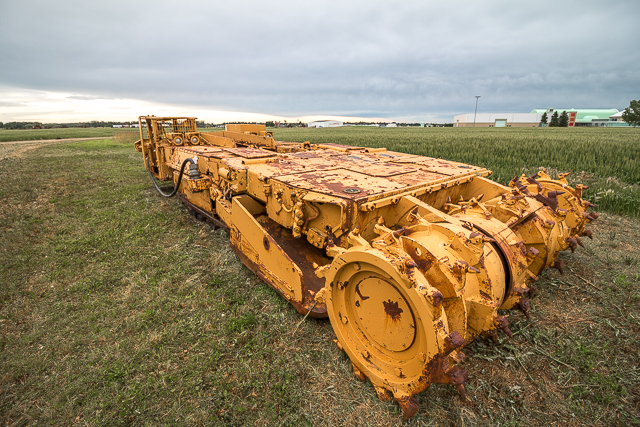
The business end of things.
Now that you’ve been introduced, come see these behemoths for yourself and prepare to be blown away. THINK BIG! In hindsight we should have included a person in one of the photos for scale as it’s otherwise hard to gauge just how big they are until you see them in person. Giants in every way, but by the standards they’re not even close to the largest. Now let that sink in.
This piece for the most part is a do-over of one we did a few years back but with updates, many tweaks and of course new photos.
Here’s a couple useful search queries if you want to know more: Reynolds Museum Wetaskiwin and Historic Mining Shovels and Draglines (<--- this is a deep rabbit hole).
Stay tuned as there’s new content always coming down the pipe…and it’s awesome!
They’re saying…
”The subject matter is always interesting and Chris & Connie do an amazing job on studying their subject matter.” Rik Barry.
A companion piece…
Monsters of Metal: Diplomat Mine – They’re just as HUGE.
Vintage BIG things…
Gas Plant Collection – Historic railway equipment hidden away.
Autocar Coal Hauler – One beast of a truck.
DNR Excavator – For building canals.
If you wish more information on what you’ve seen here, by all means contact us!
Date: July, 2020.
Location: Wetaskiwin, AB.
Article references and thanks: Reynolds-Alberta Museum (forever grateful), Books: Power Shovels – The World’s Mightiest Mining and Construction Excavators, The Earthmover Encyclopedia, Bucyrus: Making the Earth Move for 125 Years, The Story of Northwest Engineering Company: Manufactured at Green Bay Wisconsin, Canadian Trackside Guides and finally Tim Swaren.
You can take in all this machinery, and lots more too, when you visit the museum.
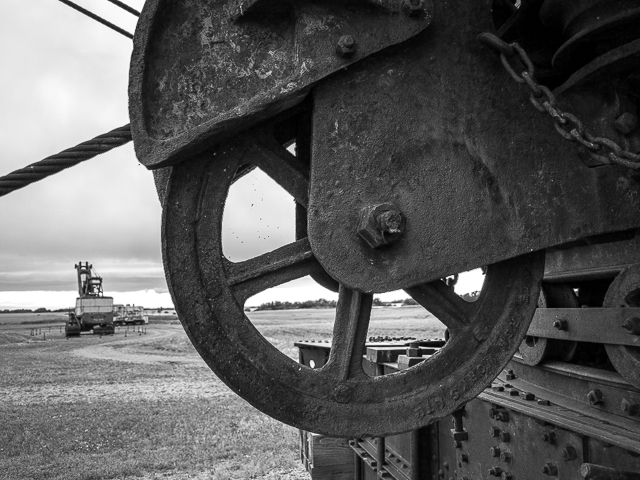
A heavy metal kind of place.
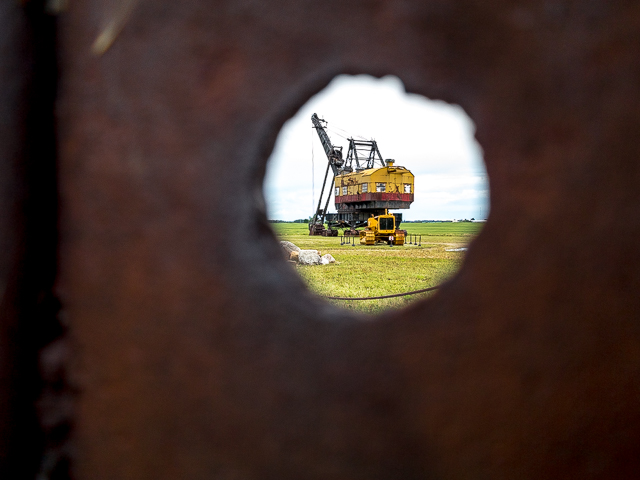
Target in sight!
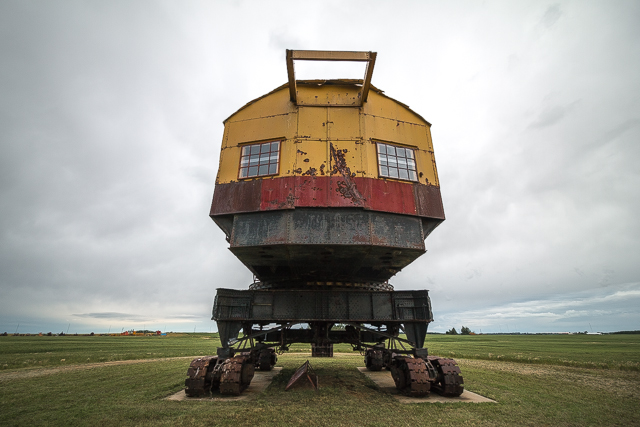
A massive Bucyrus-Erie 200-B stripping shovel.
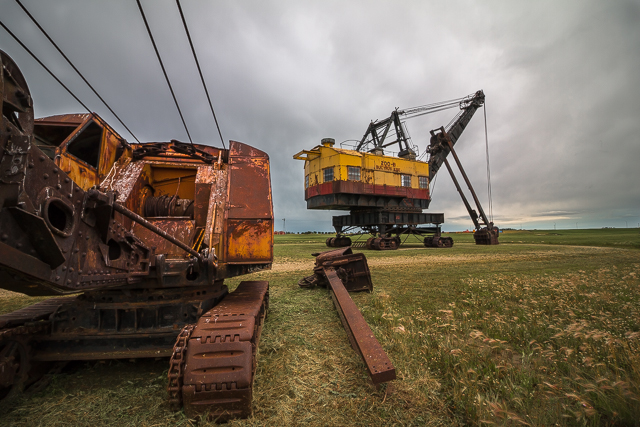
Their sheer size does not translate well in photos.
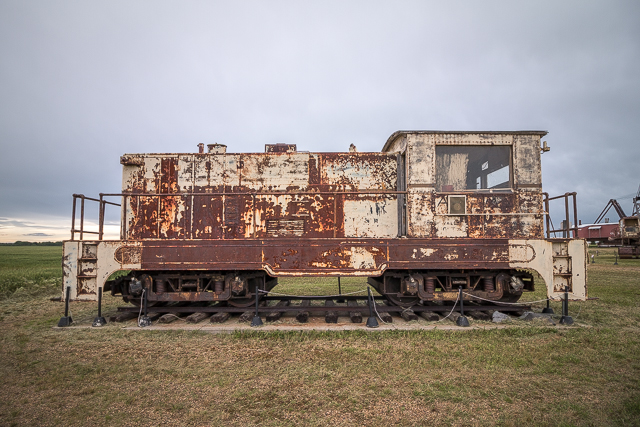
Once employed at the Sheerness Mine.
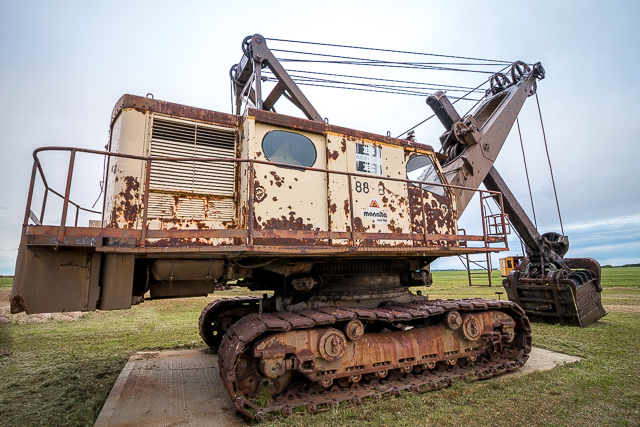
A relative lightweight 88-B loading shovel.
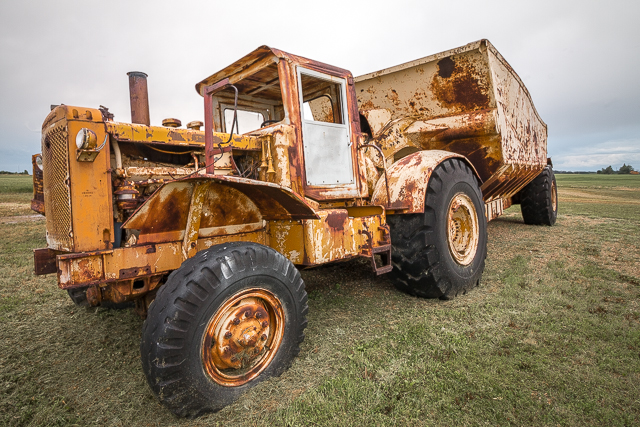
From pit to plant.
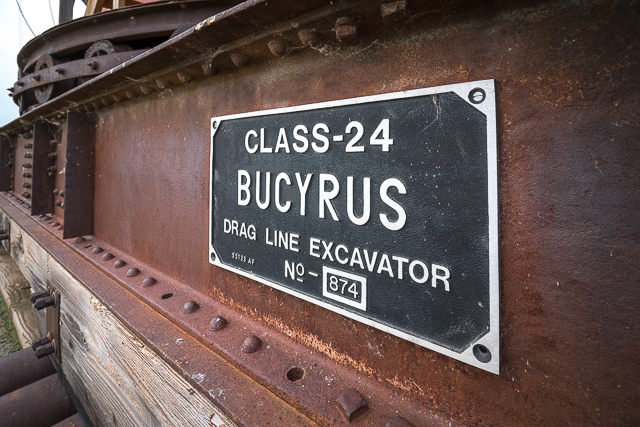
The oldest of the bunch.
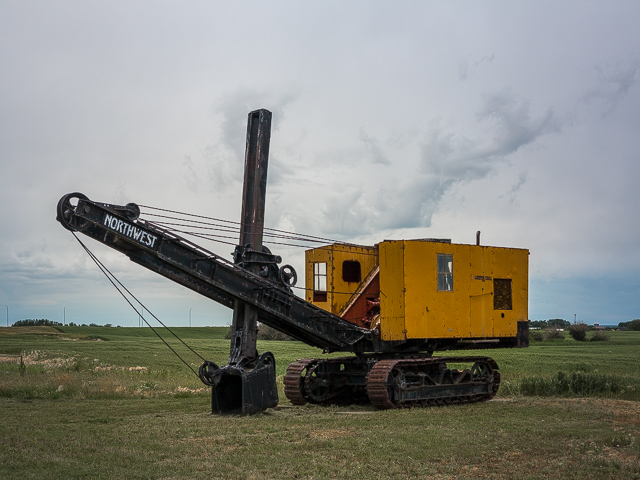
A “little” Northwest Model 105.
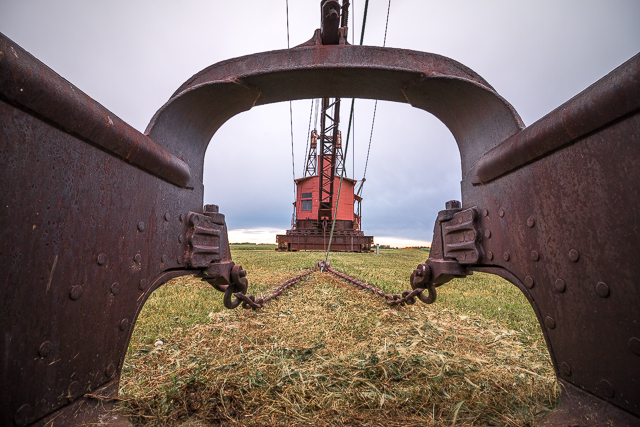
The Bucyrus Class 24.
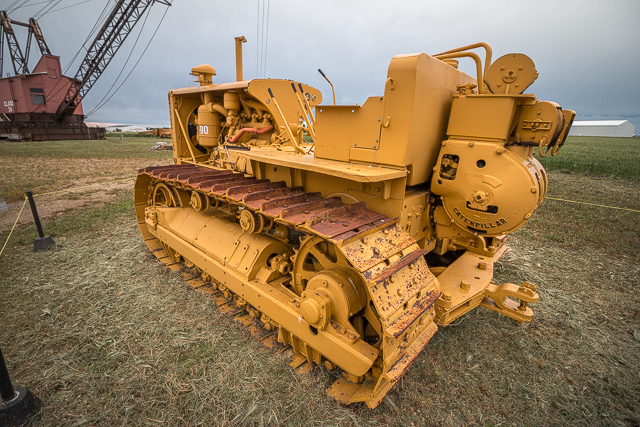
They went topless in the old days.
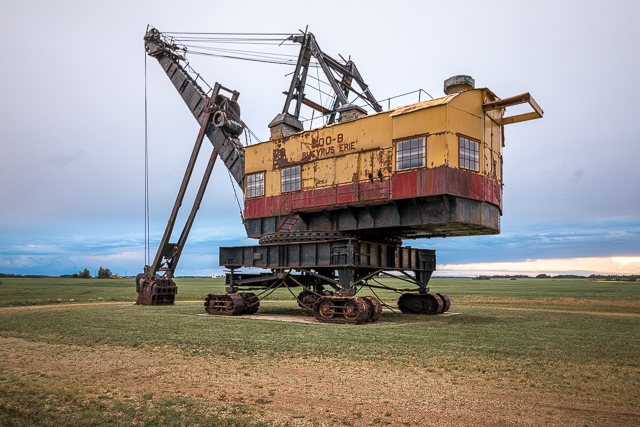
We should have included a person in the photo for scale.
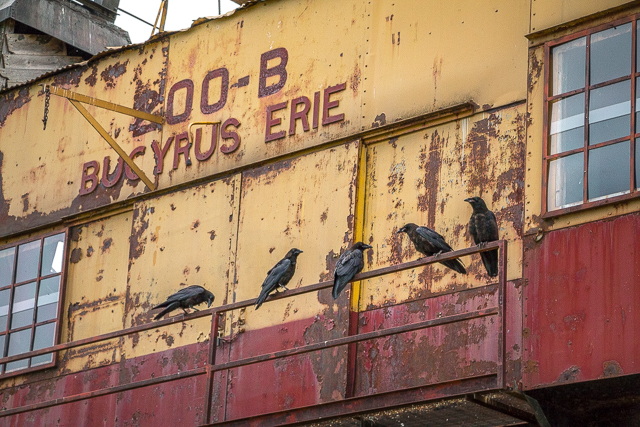
We’re being watched…
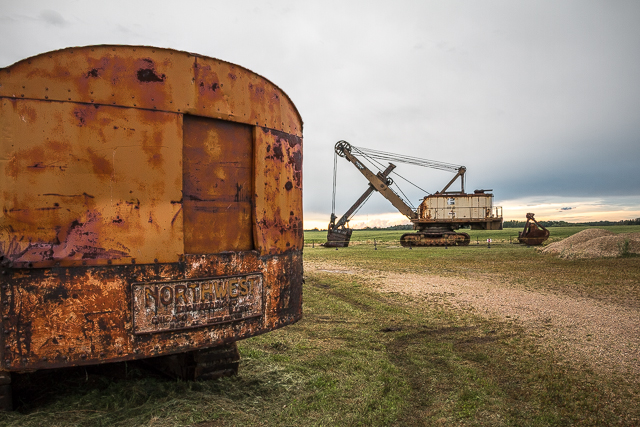
Like kids in a candy store.
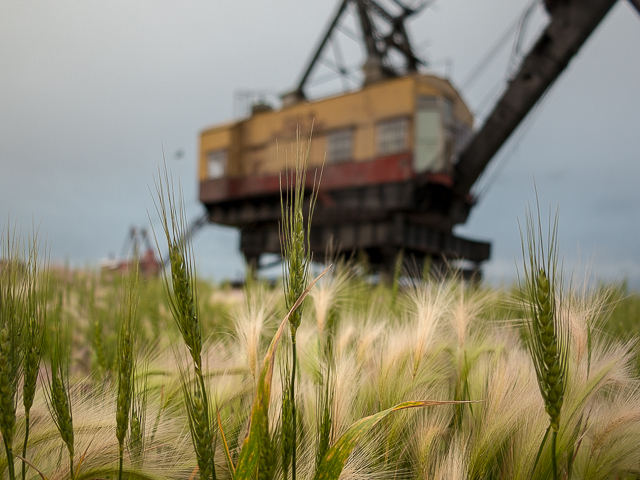
Lame artistic attempt.
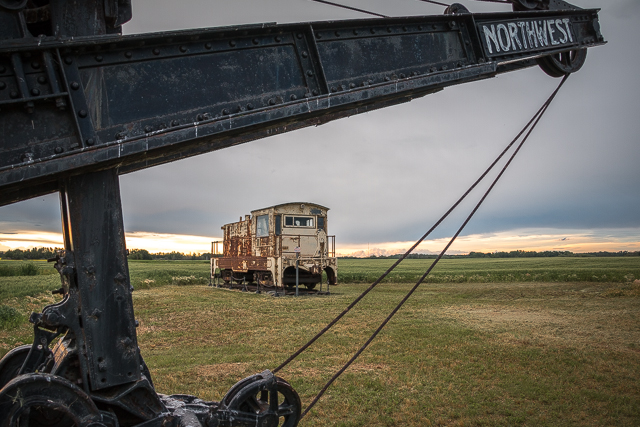
This locomotive has an interesting lineage.
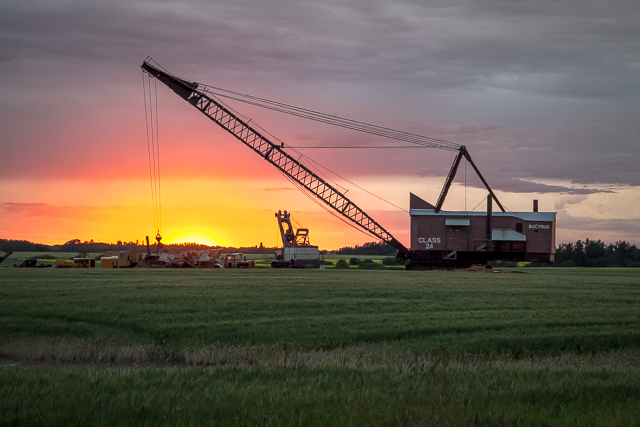
This is just one “small” display at the museum.
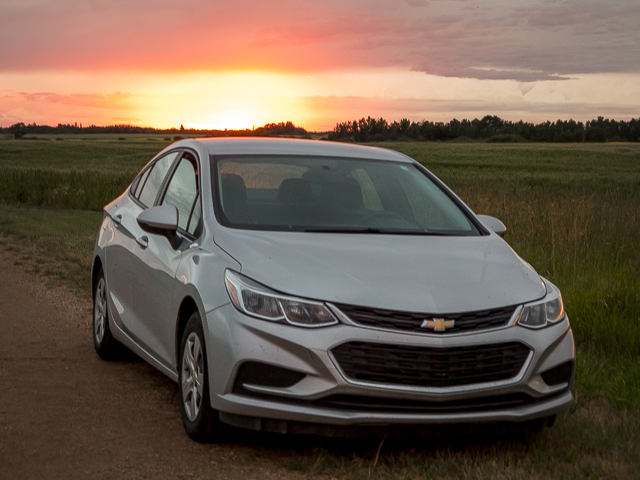
It thinks itself a giant.
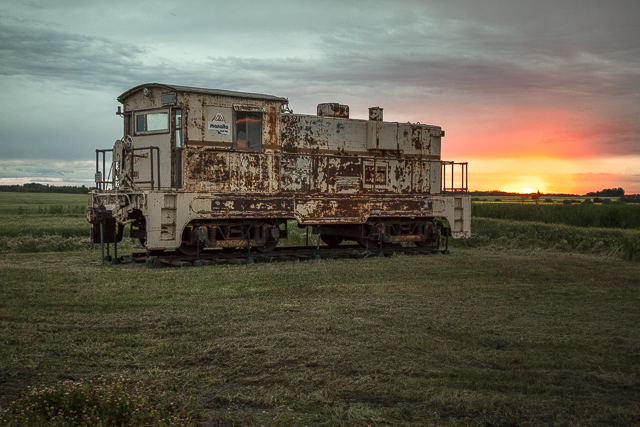
Once used to shuttle coal cars.
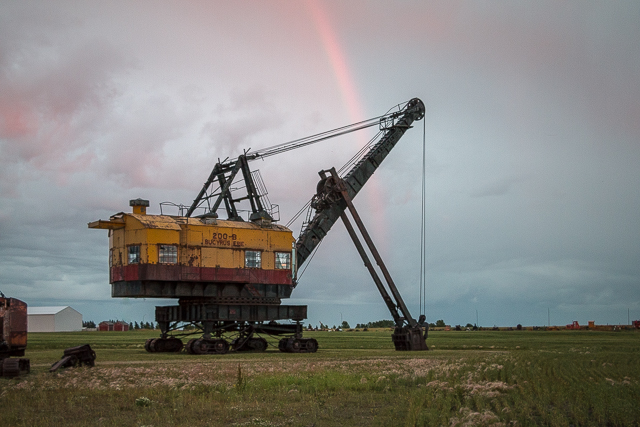
1920s tech.
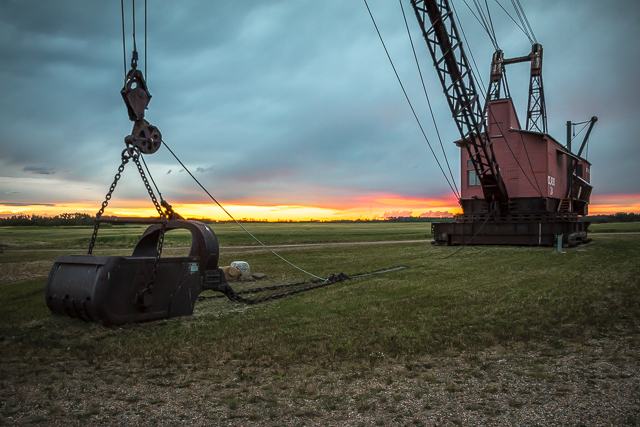
Once underwater.

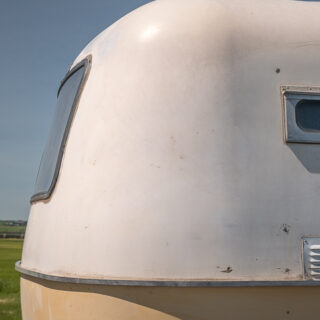
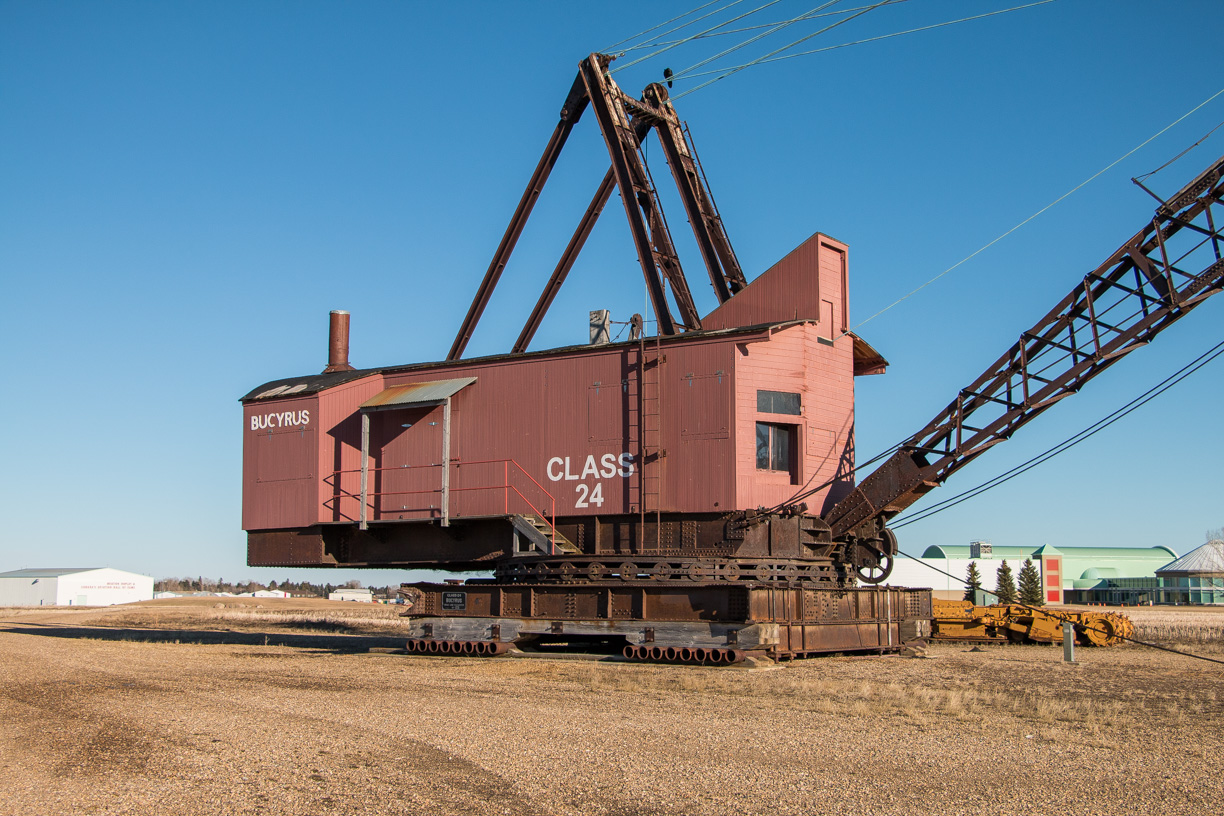
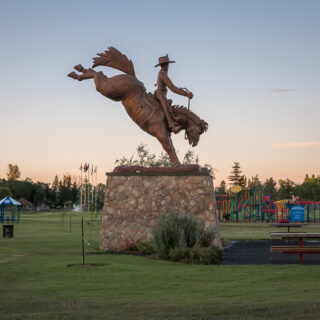
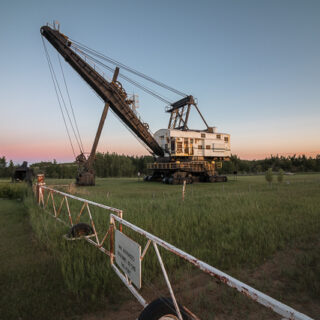
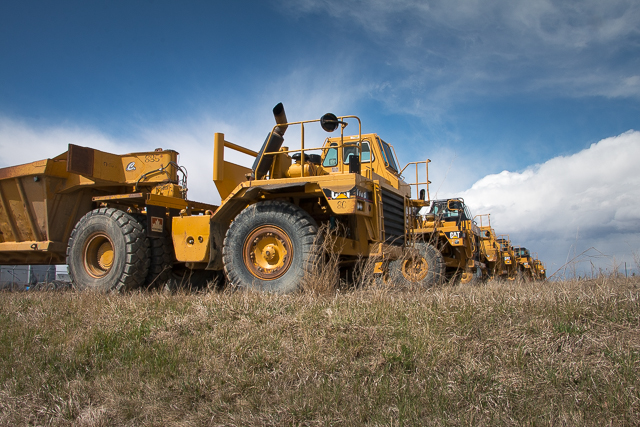
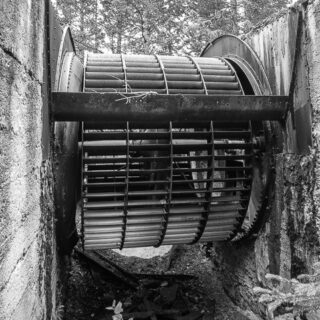
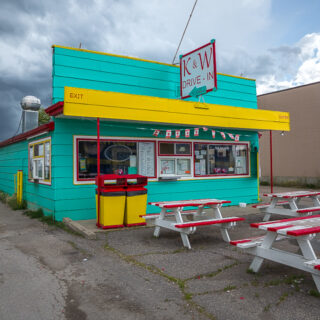
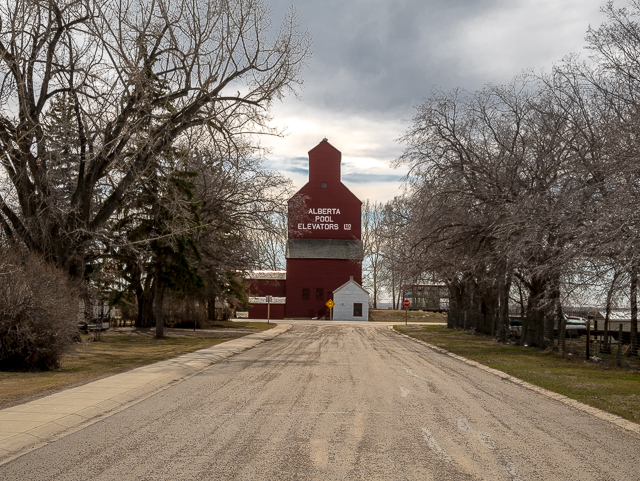
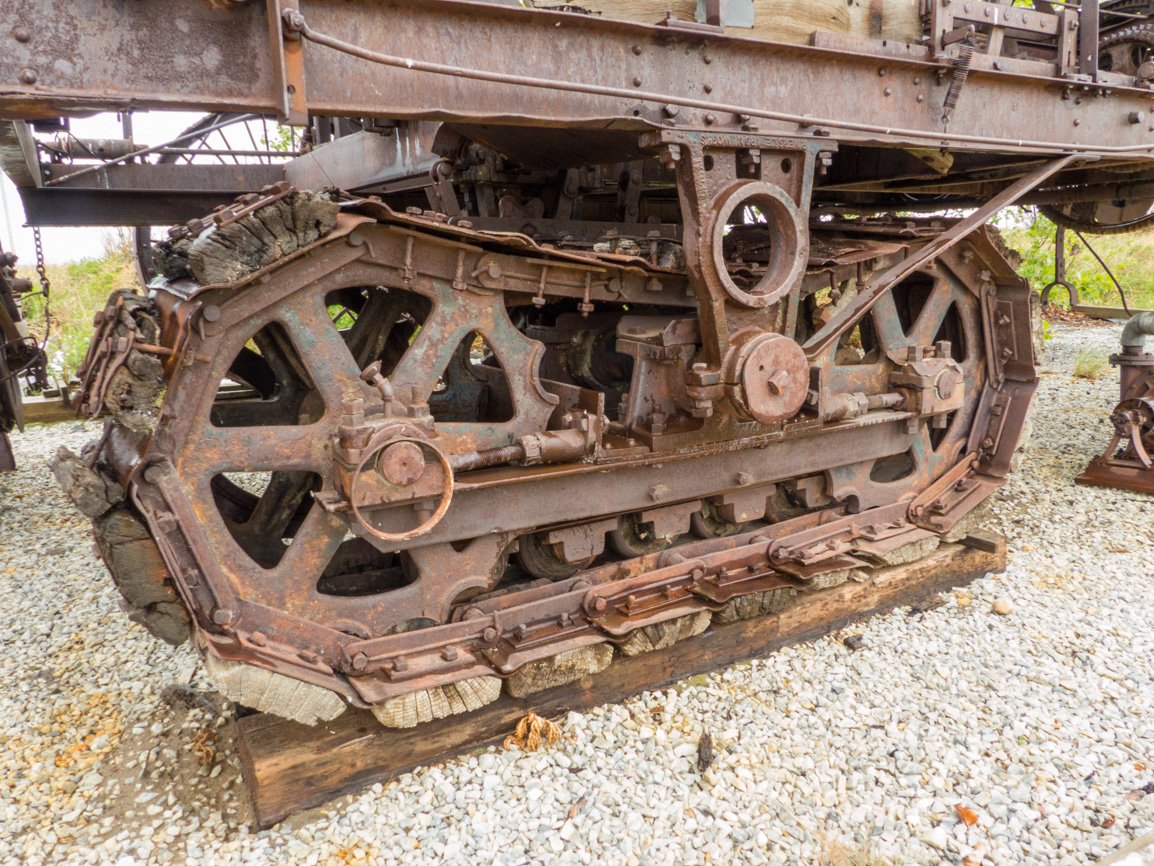
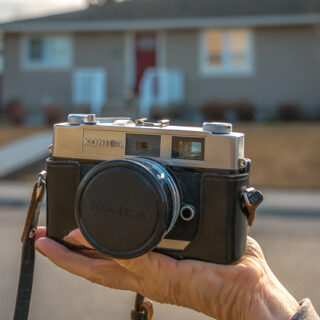
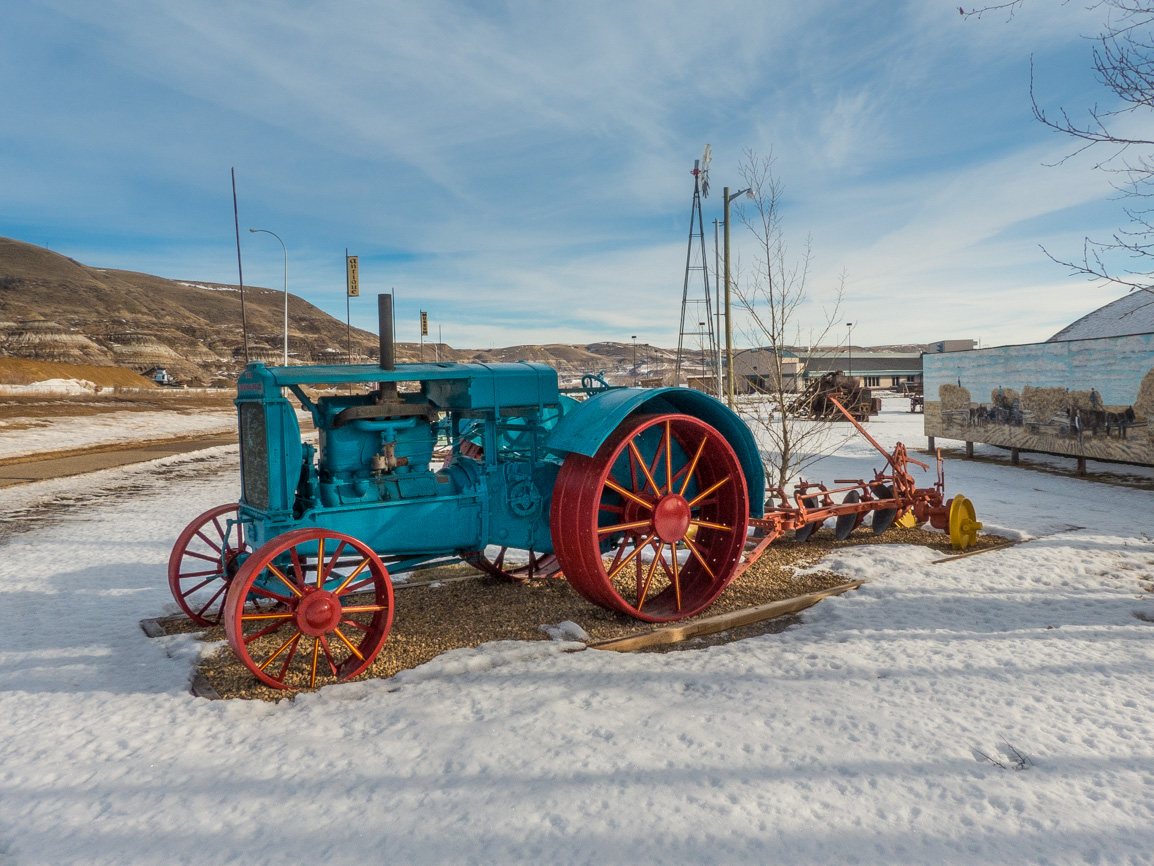
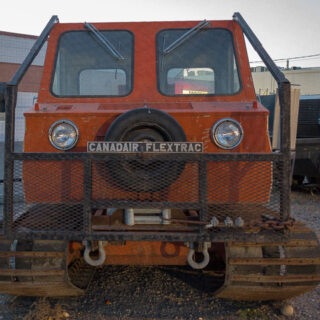







Thanks for the hard work you do!
Nice to know it’s appreciated!
Nice photos!
Some are yours, so you get a pat on the back too. I might just compile that time lapse soon that we captured at the same time.
B-E 200.
Yes, yes it is…a 200-B.
Beauty shots! We’ll be heading to the Reynolds when we visit a cousin in the area.
Awesome and tell them we sent you. Glad you like the photos too!
Nice unit!
Yes, every one is something special.
Buchyrus Erie steam shovel… guessing the tracks to be 4 to 6 ft high.
Electric powered in this case.
It’s still a good size machine for sure.
Hard to imagine anything bigger, yet the stuff that came later dwarfed these ones.
That museum is mind-blowing.
Yes! Sir!
Be good to see it re painted on display.
I don’t know, we like that it appears to have had a hard life and not all shiny and new.
Love the photos.
Awesome!
The Reynold’s Museum is a national treasure!
A fact check proves that to be “true!”
Beautiful photos!
Thank you muchly.
If this doesn’t make someone want to visit the museum, nothing will.
That’s a fine compliment. The museum’s amazing, but your knew that already.